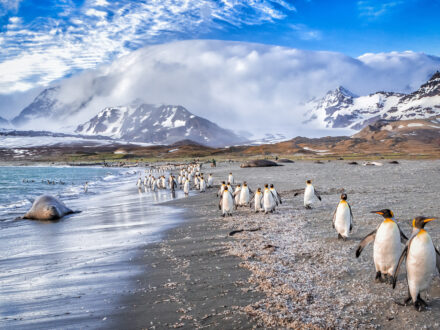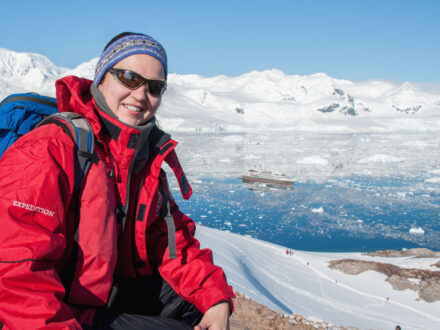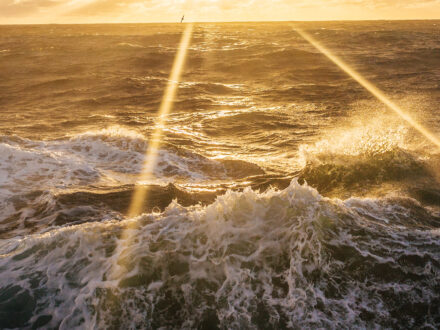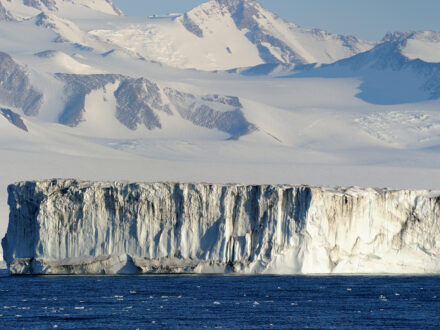A Day In Antarctica: What to Expect On An Antarctic Cruise
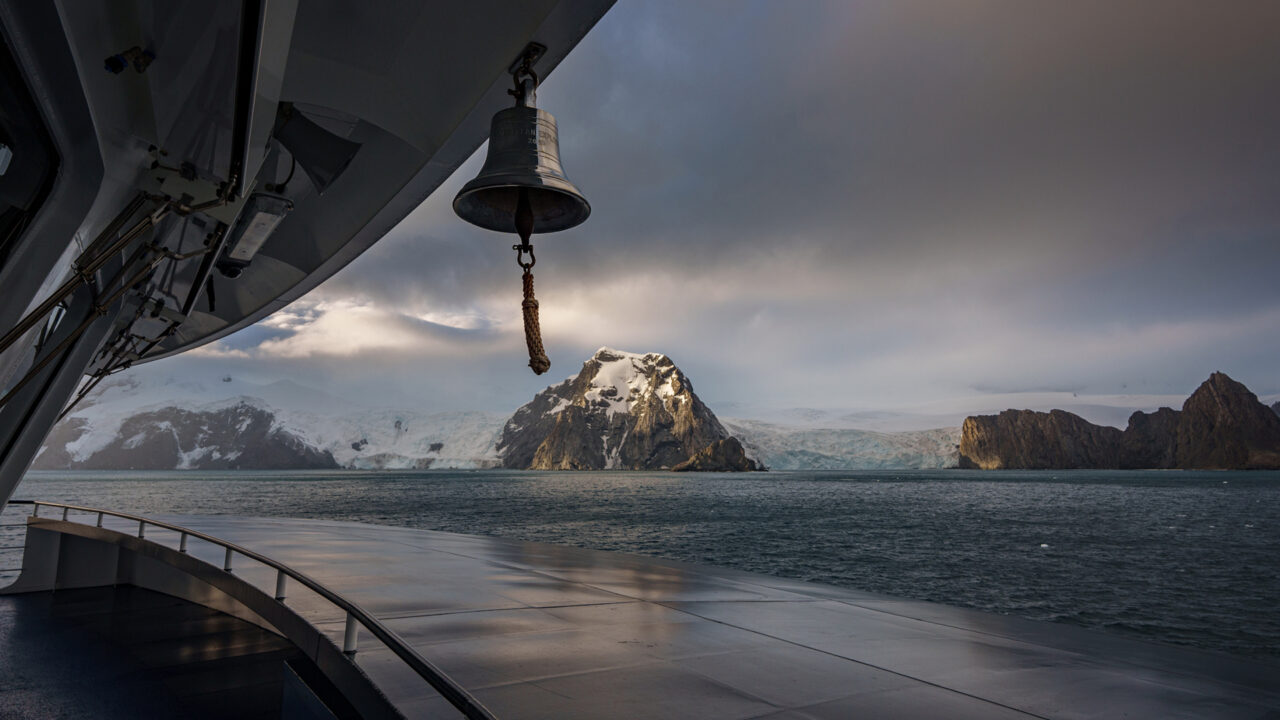
Voyages to polar seas are different from other sorts of travel, and even seasoned ‘cruisers’ are likely to have some misconceptions about what life aboard an Antarctica cruise is like, as expedition cruises are poles apart from your standard ocean-going fare.
Here the epic journey, otherworldly destination, astonishing wildlife, and the sheer adventure are the main allures, rather than the choice of restaurants, go-kart tracks, shows, water slides, and swimming pools found on a floating resort. Perhaps the only similarity is the conditions which you can now find within the ice bars and snow rooms on some modern ocean cruise liners, which you can experience al fresco in Antarctica!
That’s not to say that some Antarctic vessels aren’t luxurious or comfortable though. Some of the latest ships to be launched have more of a private superyacht-like feel, and do in fact have a choice of restaurants, bars and lounges, and may even feature boutiques, a fitness center and spa on board.
The vast majority of polar ships, however, are former research or working vessels that offer more authentic expeditions, with facilities usually limited to a dining room, lounge, bar, library and lecture room. Until relatively recently, even private balconies were uncommon. But what they may lack in lavish amenities and creature comforts, they more than match the former, more expensive alternatives in terms of the quality of their guides and experience in the region.
What Can You Expect on an Antarctic cruise?
Before we drill down into this, it’s important to highlight that everyone’s visit to Antarctica will be unique as the number of variables are almost incalculable. You may be in control of some of them—like what you personally want to do and see, how you get there and how comfortable your accommodations are—but the majority are down to Mother Nature, and one person’s experience on the same ship and same itinerary one week may be very different to another’s the following week.
Even if you choose a specific itinerary in the hope of exploring a certain location, it’s imperative to understand that no cruise operator can guarantee visiting specific landing sites in advance for a couple of reasons. Firstly, the ever mercurial weather and sea conditions are simply too unpredictable, and it;s not uncommon for scheduled landing sites to change two or three times in a single day. Secondly, all the permits have to be arranged and sailing plans approved by IAATO in advance, but this actually happens long after operators start selling berths. That’s why you may often see several days of an itinerary labeled along the lines of “Captain’s Choice” with deliberately vague daily descriptions. In many cases this works in your favor, as the captain can react quickly to local circumstances and opportunities, such as changing course to follow a pod of feeding whales. However it can be a little frustrating when you wake up expecting to go kayaking around an iceberg-filled bay only to find that the weather conditions means it’s been scrapped from the playbook altogether. Patience and flexible attitude goes a long way to ensuring your expedition enjoyment.
What you can be sure of, however, is a once-in-a-lifetime experience shared with kindred spirits, immersive excursions past calving glaciers and pristine icy plateaus, and—with a little luck—a dance card full of rich wildlife encounters, from soaring south polar skuas, to breaching whales and playful penguins.
Be warned that if you’re thinking of visiting Antarctica just to tick off a box (perhaps your seventh continent?), you may well come away caring more about the natural world and contemplating your place within it.
Beauty all around
Life on Board
Life on board can vary significantly between Antarctic vessels, largely dependent on what amenities they boast. Vessel vibes may also differ slightly from ship to ship, and even evocative decor can go a long way to setting the mood on board. But in general, despite the frigid external environment, indoors on any ship you’ll find the cordial hospitality of the expert and passionate crew, and the excitement of your fellow, like-minded passengers, creates a warm, relaxed and congenial atmosphere.
Smaller ships tend to offer a more intimate experience, while on larger ships you have the option to remain more anonymous if you wish. Antarctic cruising is a cosmopolitan affair, with polar passengers coming from all walks of life and many different countries, so it’s not uncommon for a ship’s manifest to feature ten or more nationalities, and the utterings of multiple languages to be heard. While the majority of passengers will be couples, you may be sailing with solo travelers, families, groups of friends, or sometimes special-interest groups, like birdwatchers or alumni groups.
No matter who you are traveling with, there is something intangible about sharing such a unique and privileged experience—the kind that even the most intrepid travelers will feel changed by—and you’ll find a special bond develops with everyone on board because you were all a part of it. Don’t be surprised if, especially towards the end of your trip, you find yourself dining together in the evenings on three-course meals with new-found friends, airdropping photos and swapping tales and email addresses over a glass or two of Chilean carménère or Argentinian malbec.
Antarctic cruises are essentially voyages of discovery, and education plays a large part in this. Guests will attend daily lectures and video screenings—with conservation a central theme—to prepare you for, and enrich, the adventures that lie ahead. These ‘shipboard study’ programs, many of which have won awards for excellence, are always led by professionals, each with their own expertise in their respective fields, from glaciology, geopolitics and geology, to wildlife, the history of Antarctic exploration and oceanography. Apart from the wildlife, these experts are the true rock stars of expedition cruising, playing the part of guide, narrator, and raconteur, always enthralling and entertaining guests with their anecdotes, insight and knowledge honed over a lifetime of learning, with many having been traveling to Antarctica annually for more than a decade.
Apart from the on board lecture theater, all ships have ample indoor public spaces and outside decks where passengers can view and photograph the wondrous wildlife and scenery of the White Continent. You can also usually do this from the comfort of your sea-facing cabin, especially if your suite features a balcony. In open water you can watch for seabirds that follow in the ship’s wake, as well as spot marine mammals such as hourglass dolphins and minke and humpback whales. As you get closer to the Antarctic Peninsula, the landscapes and seascapes draw the eye, with snow and ice-covered mountain peaks up to 9,200 feet in height, and icebergs of every imaginable shape and size littering the bays and inlets.
Quiet corner
Elsewhere on board you might settle down in the lounge to read some classic Antarctic literature, work up a sweat in the gym, enjoy a relaxing massage treatment in the spa, or simply get to know your fellow passengers. Many Antarctic ships maintain an ‘open bridge’ policy, welcoming passengers to the navigation and steering area. For those aboard more luxurious expedition ships, you might wish to meditate in the wellness center, take a dip in the plunge pool, or let off some steam in the sauna.
Interestingly one thing you won’t find anyone on board doing is whistling. Sailors are a superstitious lot, and whistling anywhere on a ship is considered bad luck as tradition says that a person whistling is calling up the wind and that a storm will result!
Food-wise, going hungry is one thing you definitely won’t need to worry about. Even at the end of the world where one might expect sustenance to be scarce, there is plenty of food to fuel your adventure, with well thought out meals and a wide range of international options at every sitting. Breakfast is normally always a continental-style buffet, and dinner usually a served, three-course affair with a choice of both starter and main course. Lunch could be either buffet or served depending on your chosen vessel.
Meals are typically eaten in a convivial refectory-style dining room, but luxury ships may offer more exclusive fine-dining in a choice of restaurants, and the even less sociable option of 24-hour in-suite dining. Ships’ galleys are always happy to accommodate and are experienced in catering to many dietary requirements and allergies, whether vegetarian, gluten-free, or even if you just have certain dislikes.
Fuel for your adventure
Antarctica cruises are undoubtedly active expeditions, so you’ll find you are too exhausted to stay up too late. After an action-packed day of exhilarating exploration—and perhaps after a quick nightcap in the bar—guests tend to settle into their cozy cabins, before falling into a deep, dream-filled slumber cocooned in their inviting beds—but often not before jotting down the day’s discoveries in a journal to record their polar pursuits for posterity, or admiring the profound beauty of the characters and continent they’ve caught on camera while out on deck or on excursion. Before you know it, it’ll be time for your early morning wakeup call and another day of adventure.
A Quick Note on Communication
Escaping to the “End of the World” might not necessarily mean you want to abandon all forms of communication with civilization. However, staying in touch while traveling to one of the remotest places on the planet does have its challenges. With no terrestrial cell sites nearby, all telecommunications need to be made via a satellite connection, which are available for an additional cost, and can be patchy to say the least, sometimes vanishing for days at a time.
Many ships now have reasonably good localized Wi-Fi in most public areas, but the signal may not be particularly strong from your cabin, depending on its location. Even with a good signal, connections are generally only suitable for light usage like sending an occasional WhatsApp message, as opposed to any heavy bandwidth requirements like streaming or uploading any photos or footage. Alternatively, there are usually public satphone and computer station facilities available for use to make calls and send emails. Sometimes ships can even run a cell network on board that allows you to use your own phone (subject to VSAT connection).
The use of any of these services requires a data allowance package to be bought (added to your tab to settle up at the end of the cruise). These are usually obtained from the ship’s reception, and come in various fixed price denominations giving you predetermined amounts of data. Just remember that these services are always subject to satellite connection and coverage, and cannot be relied upon on any given day or time.
Places to admire
On Excursion
Many recreational pastimes are included for free on all Antarctic voyages, and typically during each evening briefing you’ll find out what’s in store for you activity-wise the next day. Morning and afternoon excursions exploring the waters by Zodiac or the shore on foot—either strolling, hiking or snowshoeing—are part of the regular daily schedule.
Zodiac excursions are arguably the best way to sightsee in Antarctica, as you gracefully glide through the tranquil iceberg-dotted bays and get to experience nature at extremely close range, communing with sleepy seals, acrobatic whales, and belly-surfing penguins as you go. They are also used to take you to and from shore, transporting you to the region’s remote landing sites.
On shore excursions you might discover beaches laden with lazy elephant seals and noisy penguin rookeries, visit historic huts and unique Antarctic museums, research stations and abandoned whaling camps, or encounter otherworldly terrain set amidst an impressive backdrop of mountains and glaciers just begging to be explored.
Groups are typically organized by fitness level, so those looking for an active experience can participate in the more challenging hikes to the tops of the lookouts, and those just wanting a slower pace can stick to flatter ground and enjoy a leisurely Antarctic stroll. Whichever you choose, just be sure to take your camera with you as photography is very much part of the big picture.
While the majority of visitors are quite content to spend their days on Zodiak rides, hiking and photographing wildlife, the list of possible polar pursuits is diverse. More active travelers may choose to take their expedition to the next level—and subsequently experience a different day-to-day off-ship than most—by either specifically choosing a more active itinerary with more included activities, or by pre-booking in advance (usually at the time they purchase their cruise) to participate in optional adventure activities on select ‘standard’ itineraries.
These more plucky polar explorers might partake in kayaking or stand-up paddleboarding in protected fjords escorted by inquisitive penguins and seals, ski-touring across remote bays, camping overnight on the 7th Continent under the Antarctic sky, or even snorkeling or scuba diving in the pristine, sub-zero waters.
Such exciting elective escapades which put you as close to the glistening landscape and wildlife as possible are unsurprisingly popular, and should be booked well in advance to avoid disappointment, especially given the fact they have limited capacity, aren’t always offered on all itineraries, and are sometimes only available at certain times of year (for example you won’t be able to camp after January).
Bear in mind that only 100 people can be ashore at any one time in a particular location, which can sometimes mean that guests traveling on vessels with capacities greater than this—certainly those with capacities over 200—may have fewer opportunities to make shore landings. Please note that vessels carrying more than 500 passengers are strictly cruise-only and are not permitted to make any landings at all, substantially limiting your Antarctica experience.
Kayaking made easy
A Typical Day in Antarctica
Defining a typical day in Antarctica isn’t as easy as it sounds, as no two days will ever be the same on an expedition cruise given their inherent navigational nature, not to mention the unpredictability of the weather and wildlife, and ever-changing sea and ice conditions. Your choice of vessel can also play a large role, not just in terms of the on board amenities, but also in terms of the activities included, and any special exploration vehicles they may have at their disposal, such as helicopters or submarines.
But whilst the landscapes, locations, and amenities around you may change, there is a fairly constant daily routine on most Antarctica cruises—especially when exploring the western side of the Antarctic Peninsula where the vast majority of ships sail—with days filled with morning and afternoon shore excursions, which are scheduled the prior evening based on the weather forecast. So, with the major caveat of activities being subject to sufficiently mild conditions, here’s what a typical day might look like.
Just bear in mind that your typical cruise day may vary considerably depending on whether you’ve pre-booked any optional adventure activities, your choice of itinerary, and where you are within it. For example, ‘Basecamp’ itineraries include more active time on land, and the early or late days of an itinerary might involve significantly more navigation, such as when crossing the Drake Passage. These ‘sea days’ will involve more time on board, with landings replaced by lectures.
Morning
- Wake-up call between 7-8am
- Breakfast–usually buffet-style
- Dress and make first shore landing
- Return for lunch while ship relocates
Afternoon
- May include a second shore landing or educational lecture depending on where the ship is located
- Tea and snacks aboard the ship
- Free time—to nap, read, review photos, wander the ship’s decks, spot wildlife, or socialize in the ship‘s lounge and other common areas
Evening
- Meet in the ship’s lounge or meeting room to debrief on the day’s events, share stories, and receive briefing for the following day’s activities
- Cocktails in the lounge
- Dinner
- Evening presentation and Q&A with expedition staff
- Free time until retiring for the evening
Whilst an approximate agenda may give you comfort in knowing what to expect, part of the thrill of an Antarctic expedition cruise are the surprises that await you at every turn. By taking your schedule with a pinch of salt, expecting the unexpected, and embracing the adventure, you’ll make your Antarctica experience all the richer and heighten your enjoyment.
Disclaimer
Our travel guides are for informational purposes only. While we aim to provide accurate and up-to-date information, Antarctica Cruises makes no representations as to the accuracy or completeness of any information in our guides or found by following any link on this site.
Antarctica Cruises cannot and will not accept responsibility for any omissions or inaccuracies, or for any consequences arising therefrom, including any losses, injuries, or damages resulting from the display or use of this information.











































